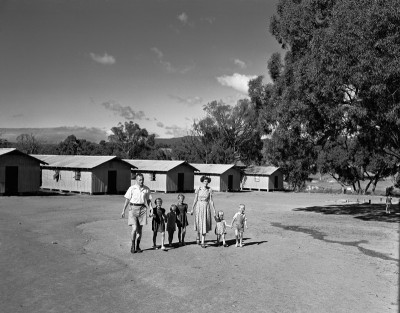Migrant camps, also known as holding centres were established after World War Two to accommodate displaced persons and assisted migrants. The largest hostels were at Bonegilla (north-east Victoria) and Bathurst (NSW). Other hostels in New South Wales included Adamstown, Balgownie, Bankstown, Berkeley, Bradfield Park, Bunnerong, Burwood, Cabramatta, Cronulla, Dundas, East Hills, Ermington, Goulburn, Greta, Katoomba, Kingsgrove, Kyeemagh, Leeton, Lithgow, Mascot, Matraville, Mayfield, Meadowbank, Nelson Bay, North Head, Orange, Parkes, Port Stephens, Randwick, St Marys, Scheyville, Schofields, Unanderra, Villawood, Wallerawang and Wallgrove.
The 1950s was the era of ‘assimilation’ where migrants were expected to abandon their culture and language and ‘blend in’ to the Australian way of life.
Migrant families could remain in the hostels from three to 12 months, and were given training to help them settle into the Australian community. Much of the early accommodation consisted of disused army camps. These were gradually replaced with proper buildings with improved facilities. The 1950s was the era of ‘assimilation’ where migrants were expected to abandon their culture and language and ‘blend in’ to the Australian way of life.
The Department of Labour and National Service ran the migrant hostels until 1948 when the Migrant Workers’ Accommodation Division was created to manage the centres. The Division was organised into three regional offices located in Sydney, Melbourne and Adelaide from which hostels throughout Australia were run. In January 1952, the operation of the hostels was handed over to Commonwealth Hostels Limited (CHL), a Commonwealth government owned company registered in Victoria. CHL operated until 1978.


